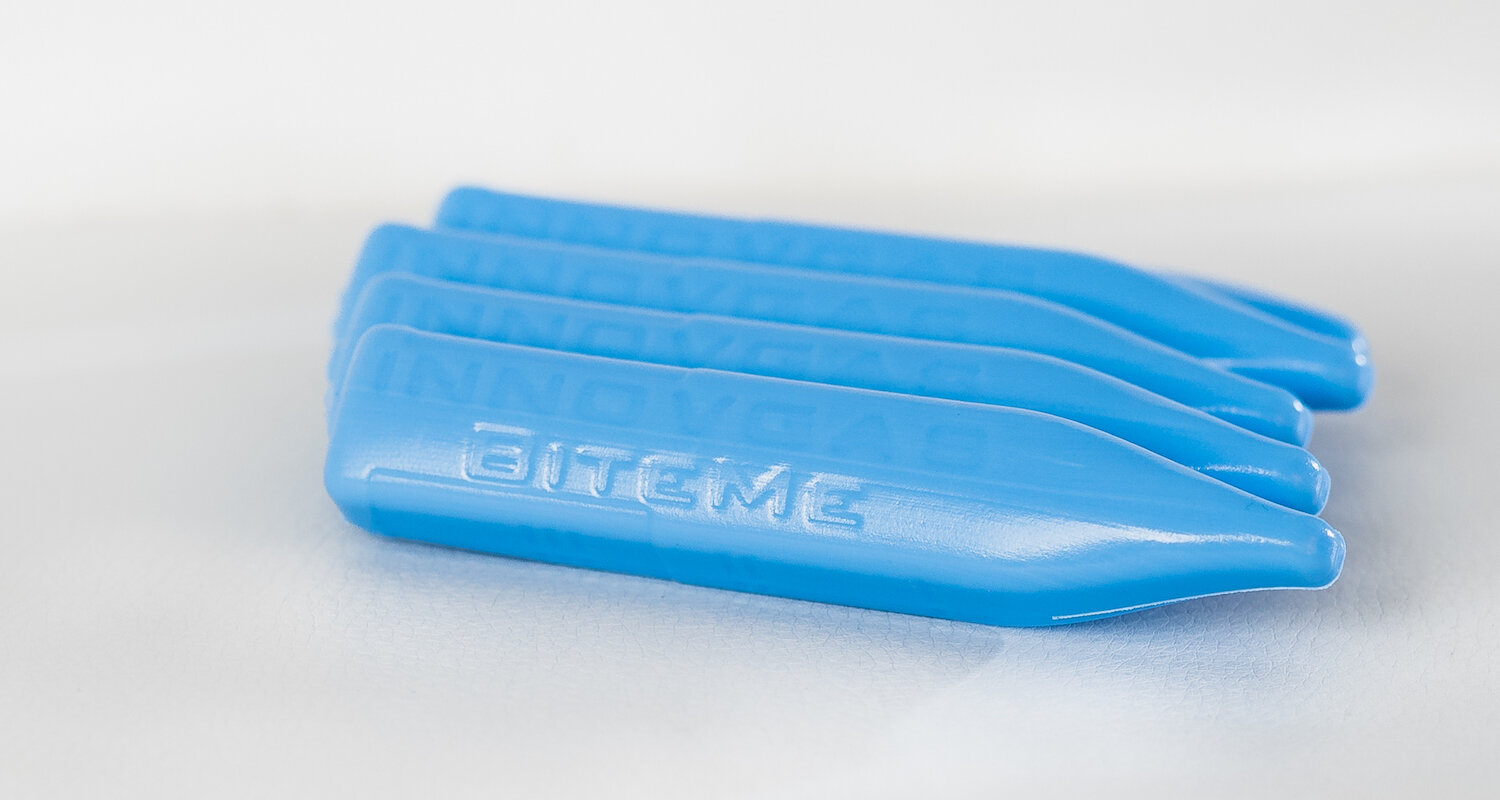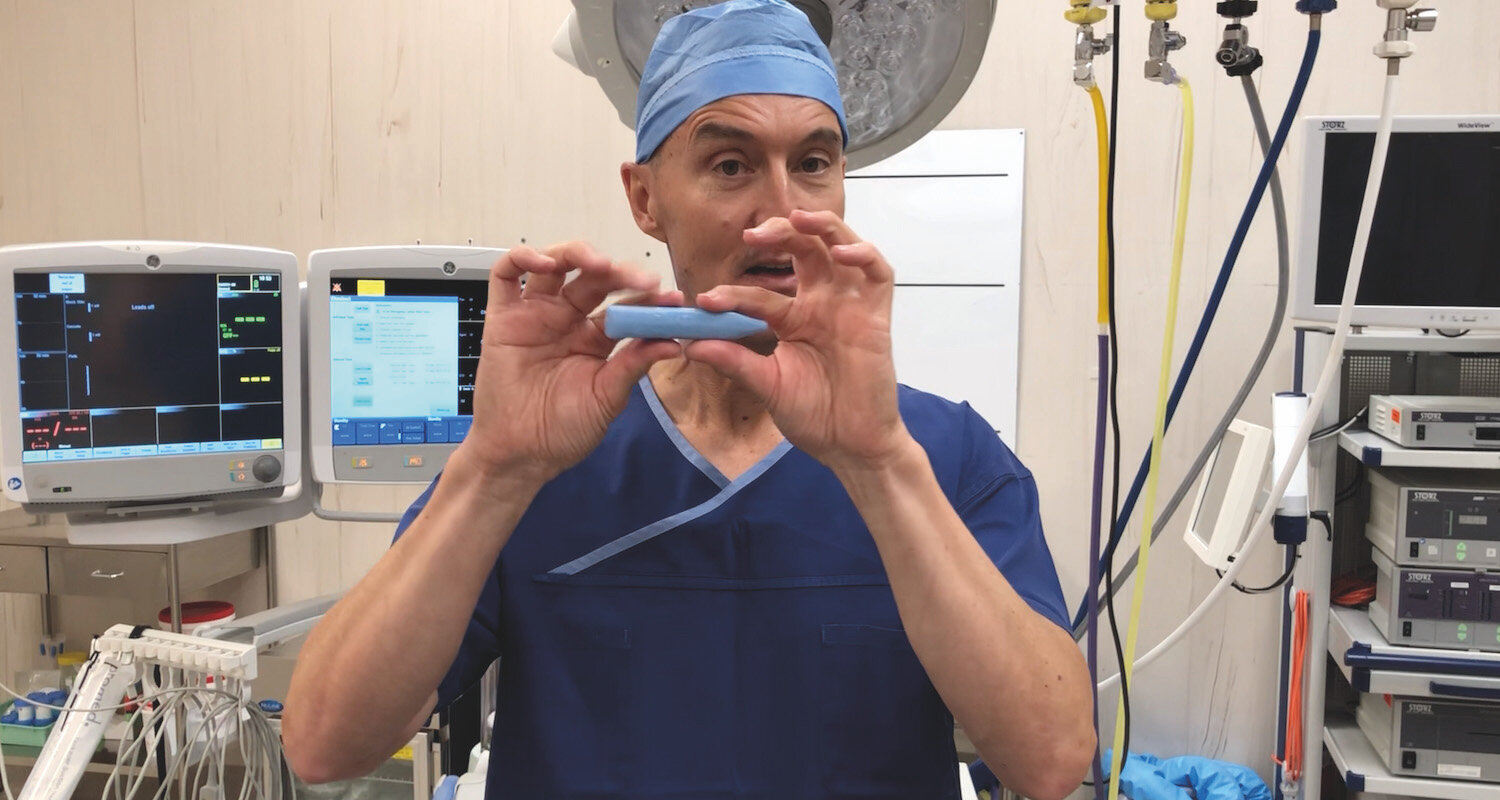BiteMe | Perioperative Bite Block
About BiteMeTM
BiteMeTM is a purpose designed, air-filled, soft plastic bite block to prevent dental trauma and airway device (ETT or LMA) damage in anaesthetised patients in the operating theatre or post anaesthetic care unit.
Key Features
- Patented design
- Soft FDA approved food grade plastic
- Tapered distal end to allow easy placement between the teeth
- Concave side to allow close conformity when taped against airway device
- Air-filled cavity which creates compliant resistance to teeth clenching on waking up
- Depth markers to allow accurate positioning
- Distal end is blunt to decrease risk of trauma to delicate oral tissues
- Smooth finish makes it easy to insert and remove
- Single use and latex free
- Highly visible in the mouth.
How does BiteMeTM differ from other bite blocks?
BiteMeTM is made of a very strong, but soft, plastic that resists the shear forces of a human bite very well.
The combination of the soft plastic surrounding a closed air-filled space means that when a patient bites down, there are two forces opposing the bite.
This means the BiteMeTM is has a spongey recoil and is therefore less likely to damage the teeth compared to a guedel airway; which have been shown to increase the risk of dental trauma1.
Many practitioners use rolled pieces of gauze as bite blocks, but these have to be “constructed”, may be contaminated, may be difficult to insert, often are ineffective and can get caught on teeth and braces. Rolled gauze bite blocks also cost more than most people think (average cost of 4 pieces of gauze, tape and time to construct = around 40 – 60 cents).
BiteMeTM comes packaged clean to reduce the risk of cross contamination.
How to use BiteMeTM?
BiteMeTM can be placed between the patient’s teeth at the beginning or end of the surgical procedure. Its tapered distal end makes it very easy to insert.
The distal end is also blunt and therefore there is less risk of damaging oral structures.
It has one concave surface which allows it to fit snugly against the airway device (ETT or LMA) tubing and can also be taped there to maintain its position.
It can also be inserted laterally to prevent the molars from clenching together.
BiteMeTM has three depth markers to allow accurate positioning.
Do we need to use a bite block?
Studies have shown that the incidence of dental injuries associated with anaesthesia is around 1 in 1000 to 1 in 2000 i.e. (0.05 – 0.1%)1,2.
In several series of closed claims data from multiple countries, dental damage is the most common claim made against anaesthetists and makes up 20 -30% of claims3,4.
Patients with poor dentition, reconstructive dental work or in their 50-70s are all at increased risk of dental damage1,5.
Multiple studies have shown that the maxillary incisors were at the highest risk for injury1.
14% of dental injuries occurred in PACU, after the patient had been handed over1.
As well as protecting the teeth, bite blocks also decrease the risk of damage to, or compression of, the airway device while still in the patient.
BiteMeTM Benefits and Advantages
- Air and plastic combination means less trauma to teeth
- Plastic is food grade and safe
- Easy to insert and remove
- Single use
- Latex free
- Highly visible in the mouth
- Australian made
- Delivered clean.
BiteMeTM is covered by U.S. Design Patent No. D883,493
To find out more, download a brochure in the following languages or get in touch.
References:
Ranum D, Ma H. Analysis of patient injury based on anesthesiology closed claims data from a major malpractice insurer. J Health Risk Manag 2014;34(2):31-42
Chadwick RG, Lindsay SM. Dental injuries during general anaesthesia: can the dentist help the anaesthetist? Dent Update 1998;25(2):76-78
Newland MC, Ellis SJ. Dental injury associated with anesthesia: a report of 161,687 anesthetics given over 14 years. J Clin Anesth 2007;19:339-345.
Gaiser RR, Castro AD. The level of anesthesia resident training does not affect the risk of dental injury. Anesth Analg 1998;87:255-7
Givol N, Gershtansky Y.Perianesthetic dental injuries: analysis of incident reports. J Clin Anesth 2004;16:173-176.


